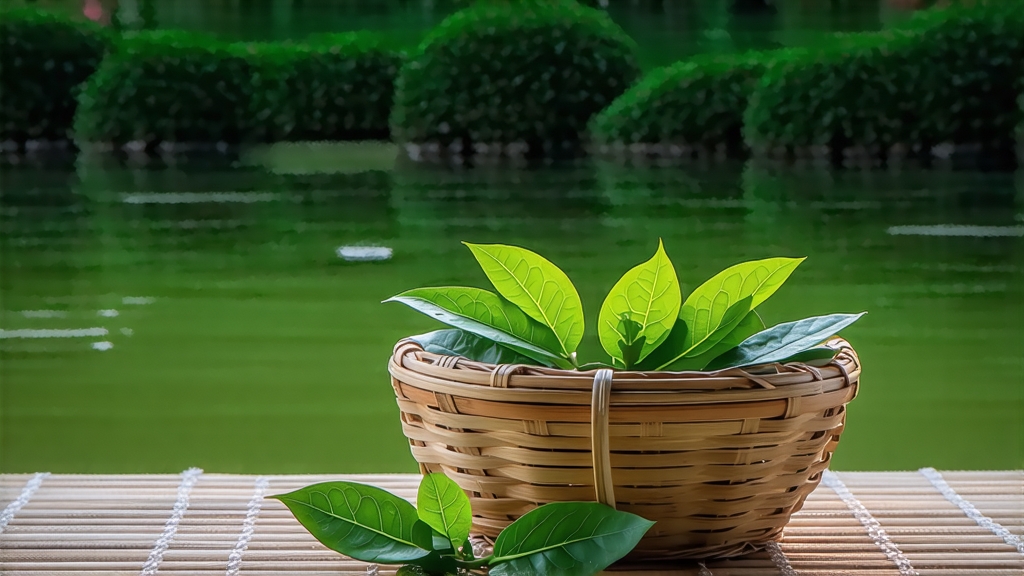
Among the jade-green constellation of Chinese green teas, none shines with steadier luster than Longjing, literally “Dragon-Well.” Named after a small spring-fed well near Hangzhou’s West Lake, the tea has for centuries been the liquid laureate of Chinese poetry, court etiquette, and everyday hospitality. International drinkers often meet it first because it is exported widely, yet its deeper stories—of Song-dynasty monks, Qing-era emperors, and 21st-century guardians of intangible cultural heritage—remain less told. This essay invites you to travel from leaf to cup, unpacking history, micro-terroir, craft, and sensorial grammar so that you may brew Longjing with the same reverence a Hangzhou native reserves for the first spring thunder.
Historical echoes
The earliest written record dates to the Tang dynasty (618-907), when Lu Yu’s Classic of Tea listed a “West Lake” tea among notable greens. The name Longjing appears in Song-era gazetteers, but fame crystallized during the Ming. When the Qianlong Emperor visited Hangzhou in 1751, he allegedly plucked leaves himself at the Hugong Temple garden atop Lion Peak (Shi Feng) and then decreed those 18 bushes “imperial.” From that moment, Longjing became tribute tea, carried by fast horses to Beijing while still warm from the wok. Republican-era merchants graded it obsessively, and in 1949 the new government kept the tradition alive by establishing state-owned tea farms. Today the designation “West Lake Longjing” enjoys the same EU geographical-indication protection as Champagne, a legal shield for 168 square kilometers of core producing zone.
Micro-terroir: more than a postcard
West Lake is not merely scenic; its north-south orientation funnels moist monsoon air into a natural humidity chamber. The water body moderates temperature, delaying spring sprout by 7–10 days compared with inland Zhejiang, concentrating amino acids. Surrounding hills—Shi Feng, Wengjia, Wuyun, Meijiawu, and Longjing Village itself—offer acidic sandy loam rich in quartz and feldspar. The highest grade, Shi Feng Longjing, grows at 300–500 m under sporadic mist that filters sunlight into a soft, shifting mosaic. The same cultivar transplanted 50 km away produces a perfectly decent green, yet lacks the orchid-bean perfume locals call “long xiang”—dragon aroma.
Cultivars and styles
While Camellia sinensis var. sinensis is the species, three clonal lineages dominate authentic West Lake plantings. The traditional “group seed” (qunti zhong) is a sexually propagated mix of old bushes; leaves are small, pale, and intensely sweet. Longjing #43, released in 1987, buds earlier, yields a more uniform emerald appearance, and tolerates mechanical harvesting; most commercial grades rely on it. A newer selection, Zhongcha 102, trades some fragrance for frost resistance and is rarely admitted to the inner sanctum of core-origin lots. Within each cultivar, picking standards create further tiers: one bud (qingming qian, pre-Qingming), one bud and one unfolding leaf (yuqian, pre-rain), and one bud with two leaves (san zhen, three needles). The earlier the pick, the higher the price, but not always the most balanced flavor; connoisseurs often prefer yuqian for its equilibrium of sweetness, grassiness, and body.
The 10-handed dance of pan-firing
Longjing’s soul is forged in a wok heated to 80–100 °C within minutes of picking. A master “tea doctor” uses only bare hands, calloused after years of contact with sand-temperature metal. The choreography unfolds in three acts.
- “Killing green” (shaqing): 12–15 min of high heat deactivates enzymes, fixing the jade hue.
- “Tiao li” (raking and shaking): temperature drops to 60 °C; leaves are pressed against the wok with a bamboo brush to flatten them into the signature sword shape while moisture exits through tiny pores.
- “Hui guo” (return to pot): a final 5 min at 50 °C sets the fragrance and reduces residual moisture to 3 %. Throughout, the artisan listens for the sound of leaves sliding like silk, smells the shift from cut-grass to toasted chestnut, and watches for the moment edges turn ivory